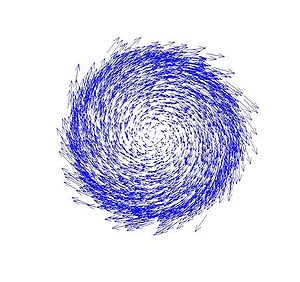Difference between revisions of "Magnetized Electron Gun for MEIC Cooler"
| Line 1: | Line 1: | ||
[[file:magBeam.JPEG|right|300px|]] | [[file:magBeam.JPEG|right|300px|]] | ||
| − | This | + | This LDRD proposal aims to generate magnetized electron beams from a DC high voltage photogun. Simulations and corresponding measurements of beam magnetization as a function of laser pulse dimension and magnetic field strength at the photocathode are planned. Round-to-flat beam transformation will be performed using three skew quadrupoles and the transverse emittance ratios will be measured. Photocathode lifetime at milli-ampere currents will be compared to beam lifetimes with no magnetization, to study the effect of the solenoid field on photocathode ion-back bombardment. Afterwards, a follow-up proposal can be submitted to evaluate the merits of magnetized beam generation using a DC high voltage thermionic gun, with rf-pulsed gridded thermionic emitter. |
| + | Combined, these simulations and measurements will benchmark our design tools and provide insights on ways to optimize the MEIC electron cooler, and help us choose the appropriate electron source and injector layout. | ||
| + | |||
* '''[[Magnetized Beam LDRD]]''' | * '''[[Magnetized Beam LDRD]]''' | ||
Revision as of 07:26, 28 April 2015
This LDRD proposal aims to generate magnetized electron beams from a DC high voltage photogun. Simulations and corresponding measurements of beam magnetization as a function of laser pulse dimension and magnetic field strength at the photocathode are planned. Round-to-flat beam transformation will be performed using three skew quadrupoles and the transverse emittance ratios will be measured. Photocathode lifetime at milli-ampere currents will be compared to beam lifetimes with no magnetization, to study the effect of the solenoid field on photocathode ion-back bombardment. Afterwards, a follow-up proposal can be submitted to evaluate the merits of magnetized beam generation using a DC high voltage thermionic gun, with rf-pulsed gridded thermionic emitter. Combined, these simulations and measurements will benchmark our design tools and provide insights on ways to optimize the MEIC electron cooler, and help us choose the appropriate electron source and injector layout.
- MEIC Collaboration Meeting Spring 2015 [1]
- January 2015 MEIC Summary Document: media:MEIC_Summary_Document_1-2015.pdf
